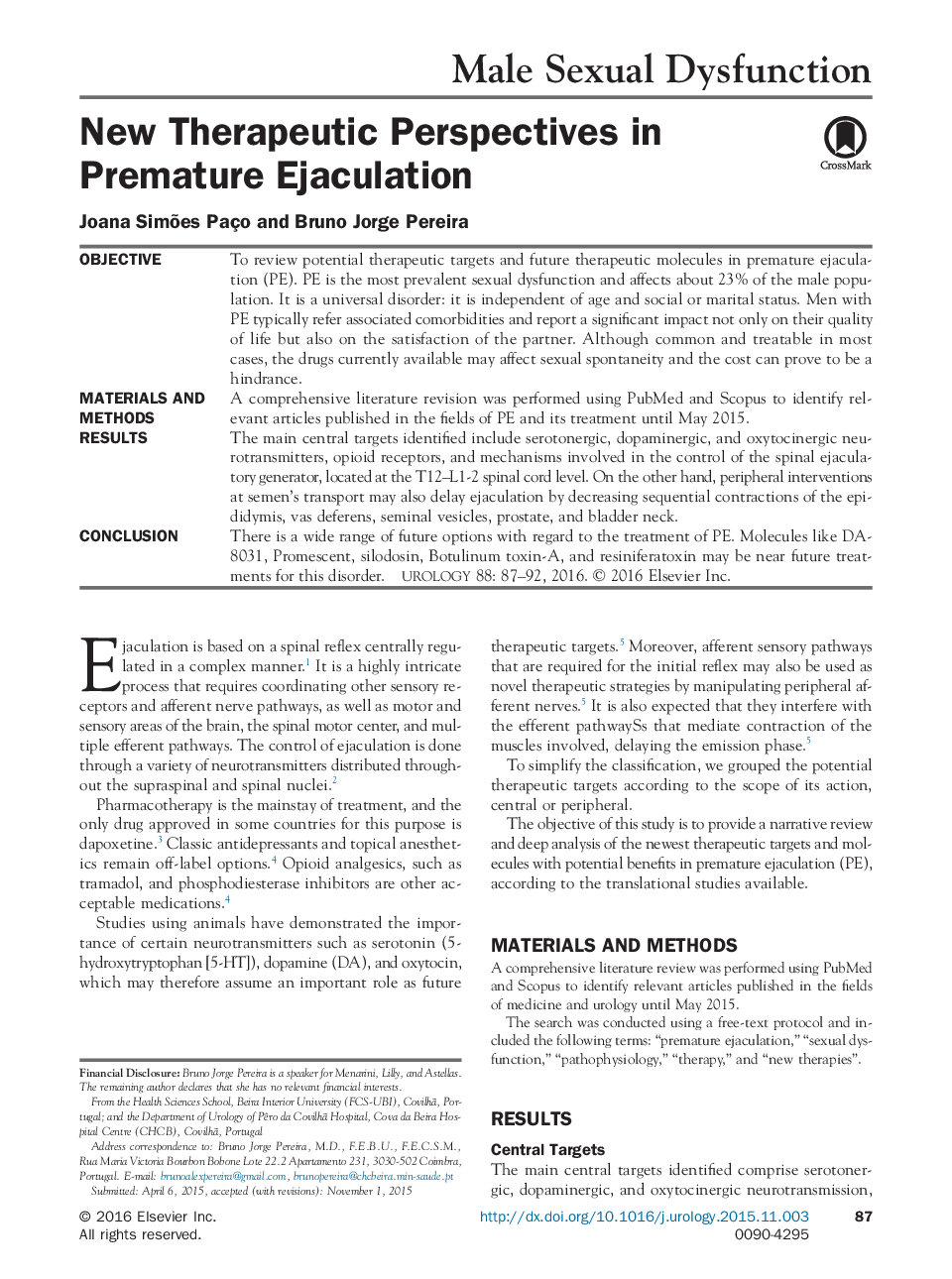| Article ID | Journal | Published Year | Pages | File Type |
|---|---|---|---|---|
| 3898328 | Urology | 2016 | 6 Pages |
ObjectiveTo review potential therapeutic targets and future therapeutic molecules in premature ejaculation (PE). PE is the most prevalent sexual dysfunction and affects about 23% of the male population. It is a universal disorder: it is independent of age and social or marital status. Men with PE typically refer associated comorbidities and report a significant impact not only on their quality of life but also on the satisfaction of the partner. Although common and treatable in most cases, the drugs currently available may affect sexual spontaneity and the cost can prove to be a hindrance.Materials and MethodsA comprehensive literature revision was performed using PubMed and Scopus to identify relevant articles published in the fields of PE and its treatment until May 2015.ResultsThe main central targets identified include serotonergic, dopaminergic, and oxytocinergic neurotransmitters, opioid receptors, and mechanisms involved in the control of the spinal ejaculatory generator, located at the T12–L1-2 spinal cord level. On the other hand, peripheral interventions at semen's transport may also delay ejaculation by decreasing sequential contractions of the epididymis, vas deferens, seminal vesicles, prostate, and bladder neck.ConclusionThere is a wide range of future options with regard to the treatment of PE. Molecules like DA-8031, Promescent, silodosin, Botulinum toxin-A, and resiniferatoxin may be near future treatments for this disorder.
